How to Avoid Ticks While Hiking
Learn tips for identifying and avoiding ticks while hiking and know what to do if you get bitten.
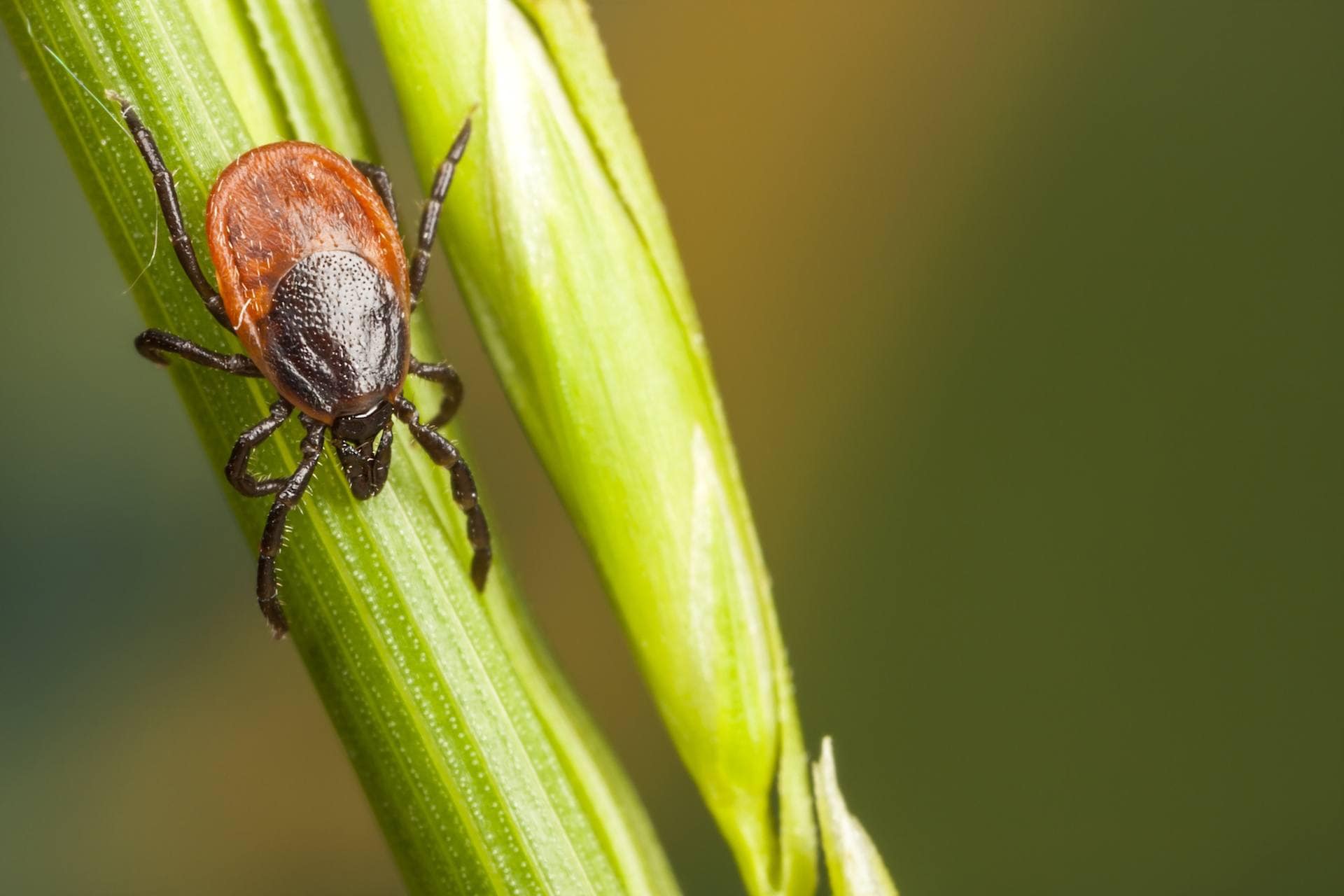
Most ticks are active from April to September, which is the busiest time of year for outdoor enthusiasts to go hiking, camping, and backpacking. However, you don’t need to go deep into the backcountry to get bitten by a tick – it can happen in your backyard!
Regardless of how much time you spend outside, it’s important to know the basics of tick prevention so you don’t contract a disease. The good news is that knowing how to prevent tick bites and what to do if you find a tick on you is pretty simple and straightforward.
*Please note, none of the tips in this post should be taken as official medical advice. If you have been bitten or think you’ve been bitten, contact your health care provider.
Which Ticks to Look Out For and Where They Live
Depending on which part of the country you’re in, you’ll want to know the different kinds of ticks and the diseases they carry. Some are specific to different regions, while others are found all over the US. Here’s a look at the most common ticks that bite humans:
Deer Tick (or Blacklegged Tick)
- Habitat: Widely found across the eastern US, especially where deer are prevalent
- Associated diseases: Lyme Disease, Babesiosis, Anaplasmosis, and Powassan virus
- When to watch out for it: Spring, summer, and fall
- Identifying features: Reddish-brown body with a black shield on its back

Brown Dog Tick
- Habitat: Found worldwide and all over the US, but more common in warmer areas
- Associated diseases: Known to carry Rocky Mountain Spotted Fever and transitted primarily through dogs that have picked a tick up
- When to watch out for it: Year-round, often present in homes with dogs
- Identifying features: Reddish-brown with no markings on back; become very engorged when feeding

Lone Star Tick
- Habitat: Found throughout the eastern and southeastern US.
- Associated diseases: Heartland virus, Tularemia, and STARI
- When to watch out for it: Year-round
- Identifying features: Lone white dot on its back

Rocky Mountain Wood Tick
- Habitat: Located all throughout the Rocky Mountain states and southwest Canada
- Associated diseases: Transmits Rocky Mountain spotted fever, Colorado Tick fever, and Tularemia
- When to watch out for it: Spring, summer, and fall
- Identifying features: Bright red, tear drop shaped body. Females have a white-colored shield while males will have gray and white spots on their bodies.
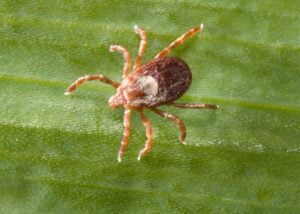
American Dog Tick
- Habitat: Found anywhere east of the Rocky Mountains and on the California Coast
- Associated diseases: Tularemia and Rocky Mountain spotted fever
- When to watch out for it: Spring and summer
- Identifying features: Dark brown body; females have an off-white shield while adult males look more mottled
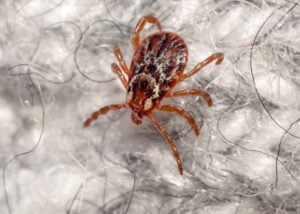
How to Avoid Ticks While Hiking
Now that we’ve covered the different species of ticks and how to identify them, let’s dive into how to avoid ticks while hiking.
1. Stay on the trail
Ticks like to live in wooded, grassy, and brushy areas. While hiking trails can be a hot spot for ticks, the single best way to avoid ticks is to avoid walking through tall grassy areas and stay in the center of the trail.
2. Cover exposed skin
Wearing clothing that gives you coverage also makes a huge difference. If you know you will be walking through grassy areas, try to wear long sleeves and long pants with socks that cover your ankles or any exposed areas. Also, light-colored clothing will help you spot ticks easier, rather than a darker color that will conceal them. Read our guide on what to wear hiking for our recommendations for hiking clothes.
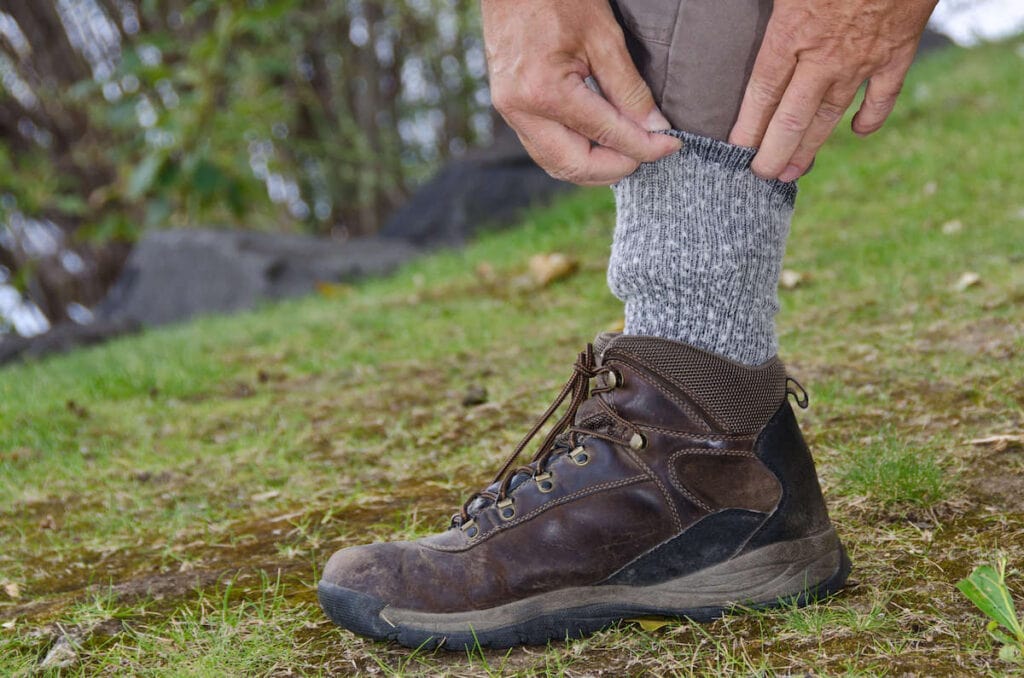
3. Use insect repellant
Use an EPA-approved bug spray that contains any of the following ingredients: DEET, picaridin, IR3535, Oil of Lemon Eucalyptus (OLE), para-menthane-diol (PMD), or 2-undecanoate. These chemicals will help deter ticks from attaching to you.
Since you want your skin to be covered by clothing, spray the insect repellant on your socks, boots, and lower pant legs.
4. Check for ticks after your hike
When you get home, remove your clothing and gear so you can check them thoroughly for any ticks. Shower within two hours of getting home, as this has been proven to reduce Lyme disease since running water will wash away any remaining ticks that might be attached to your skin. Then, check the following areas of your body:
- Under the arms
- In and around the ears
- Inside belly button
- Back of the knees
- In and around the hair
- Between the legs
- Around the waist
Read next: Battling mosquitos? Learn how to repel pesky mosquitos when hiking and backpacking.
How to Remove a Tick and What to Do After a Tick Bite
It’s hard to avoid ticks while hiking so if it does happen, being prepared and aware of what to do next will help you in the long run. Most importantly, don’t panic if you find a tick on you, just remove it as quickly as possible! The Center for Disease Control (CDC) has easy guidelines for what to do if you find one attached to your skin.
According to the CDC, here are the steps you should take to remove the tick. Remember, the longer the tick is in your skin, the more likely it will be to transmit a disease.
- Use fine-tipped tweezers or a tick-removal tool to grasp the tick as close to your skin’s surface as possible.
- Pull upward with steady, even pressure. Don’t twist or jerk the tick; this can cause the mouthparts to break off and remain in the skin. If this happens, remove the mouth parts with tweezers. If you are unable to remove the mouth easily with clean tweezers, leave it alone and let the skin heal.
- After removing the tick, thoroughly clean the bite area and your hands with rubbing alcohol or soap and water.
- Never crush a tick with your fingers. Dispose of a live tick by putting it in alcohol, placing it in a sealed bag/container, wrapping it tightly in tape, or flushing it down the toilet.

When to Go to the Doctor After a Tick Bite
If you do have symptoms after getting bitten by a tick, tell your doctor where you were and when the bite occurred. Chances are, you may not be able to remember what the tick looked like or what species it was offhand and that’s alright. Take a photo of the tick if possible.
Most symptoms of tick-borne diseases are similar and may include:
- A rash
- Fever and chills
- Aches and pains
- Muscle and joint pain or swelling
- You may also feel very fatigued
Sometimes, you’ll notice a red bullseye mark on the skin, which is a clear indication of a bite and can be indicative of Lyme’s Disease. However, it’s important to note that this characteristic bullseye rash does not occur in every case.
These symptoms tend to appear within a few days to a few weeks of a tick bite, so get to a doctor as soon as you can to have it treated.
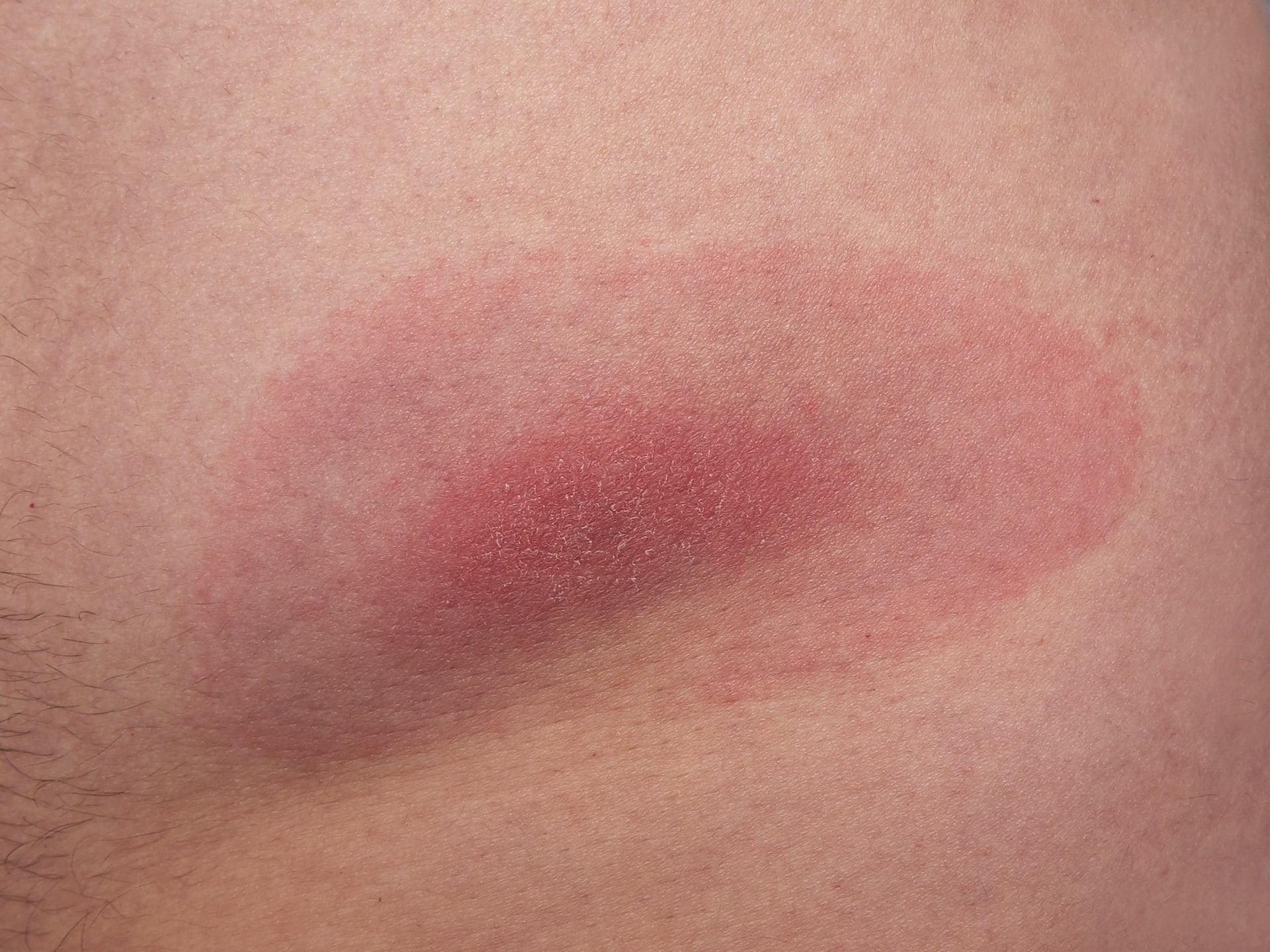
How to Prevent Ticks on Your Dogs
Dogs are just as likely to get ticks and contract a tick-borne illness as humans. The first step is to talk to your vet and see what they recommend for your area. There are a number of topical and oral medications available that will prevent ticks from attaching to your animal. You can also read this guest post about Dog First Aid for Hiking from a veterinarian, who shares some insights on ticks and dogs.
To prevent your dog from bringing ticks back into your home, give them a thorough check before going back indoors. If you do find one, use tweezers and the same method you would for a person to remove the tick. Here are the hotspots you’ll want to check to prevent a tick bite on your dog:
- In and around the ears
- Around the eyelids
- Under the collar or harness
- Under the legs
- In between their toes
- Between the back legs
- Around the tail
If you do find a tick attached to your dog, keep an eye out for any changes in behavior or appetite that might indicate a disease.
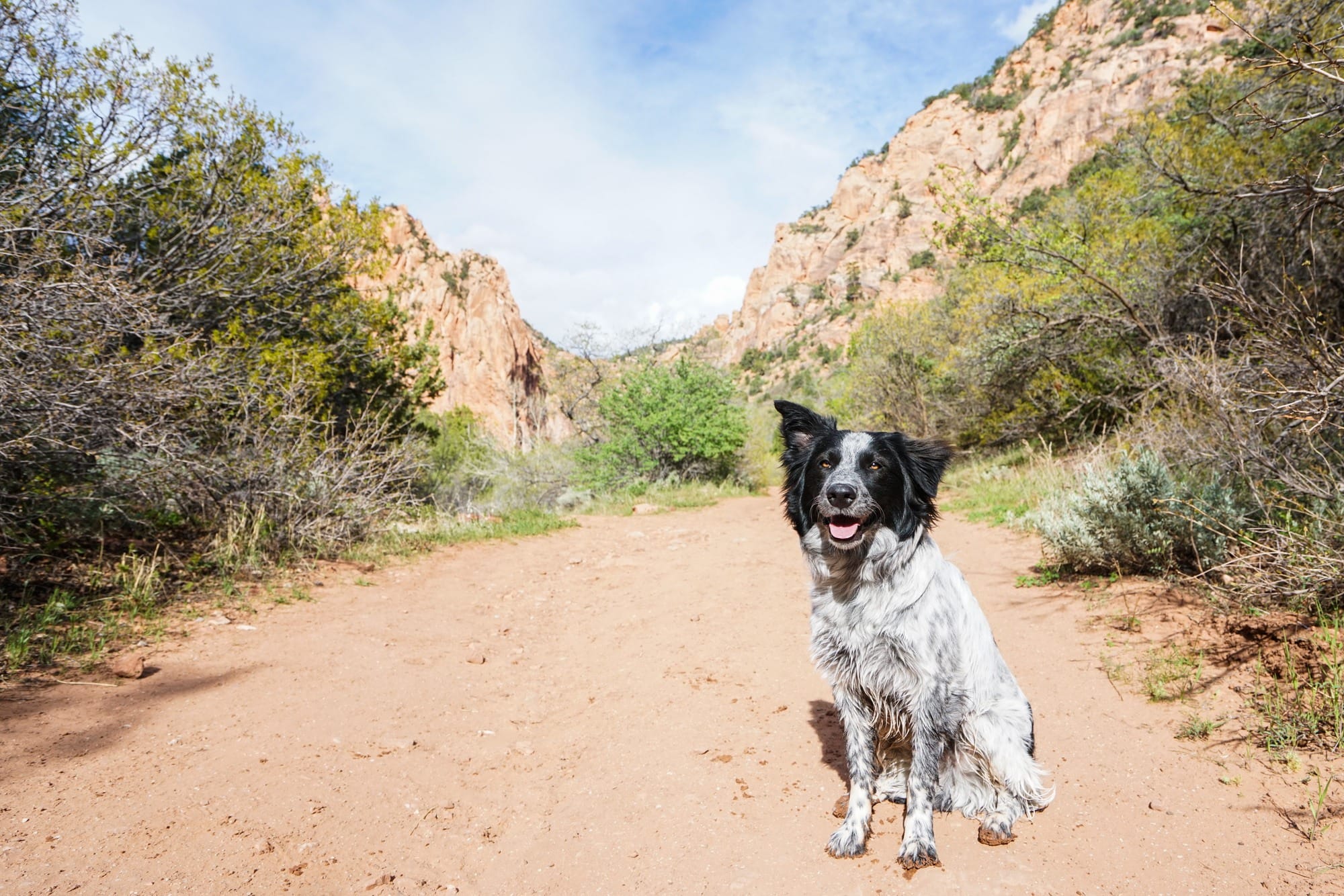
What questions or tips do you have about how to avoid ticks while hiking? Do you have any additional tips or personal experiences you can share? Leave a comment below!

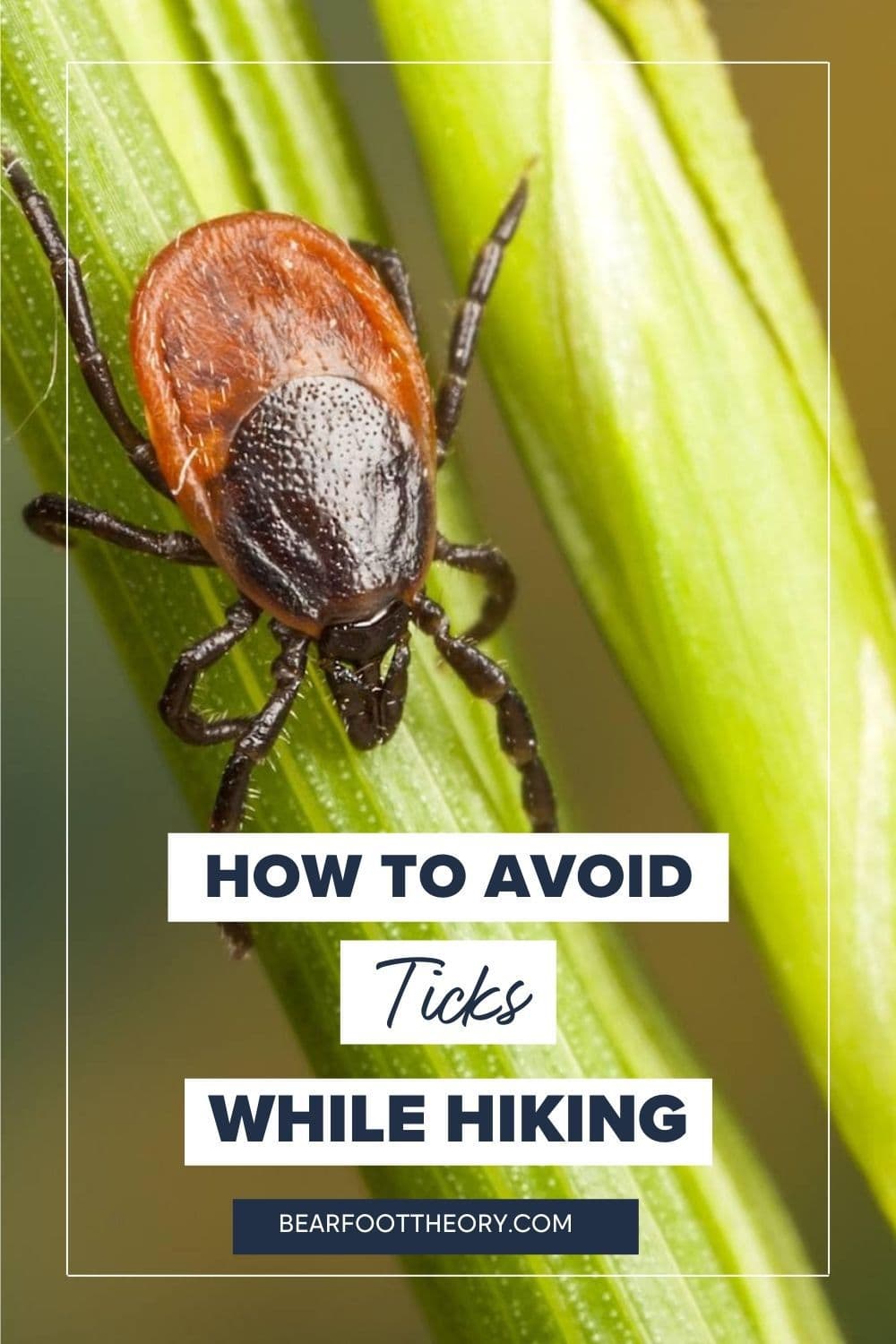
This was a really useful read! I’ve always been aware of what ticks are but never really known how to avoid them or get them off so thanks for the info. Where we’re hiking a lot at the moment there are lots of ticks with lyme disease so there’s lots of signs telling you to watch out. Now I know what to do if I do, unfortunately get bitten.
Also the thought of a tick in my belly button made me cringe – ewww!
It’s good to know that you should check your underarms for ticks. My wife is worried about getting ticks in our yard. I’ll be sure to tell her to watch out for her underarms when protecting herself against ticks.
Alright, so I know you are supposed to go 200 ft away from a trail when you need to poo, so how do you avoid ticks when you gotta go?
Good question. When going off the trail to go to the bathroom, try to avoid tall grasses (an environment that ticks like) and find a dirt clearing if possible where you can dig a deep enough hole and follow Leave No Trace guidelines. It’s always a good idea to do a thorough check when you get home if you’ve been hiking in an area where ticks are present, whether you go to the bathroom or not.
True story, not trying to be funny here. While hiking in Maine, wearing long pants and a tucked in shirt, somehow I ended up with a tick between my cheeks; yes those cheeks. I’m sure its happened to others too; most won’t write about it.
Haha! We believe it. A good reminder to check *everywhere* after a hike 🙂
Cedarwood oil on cuffs and take a B complex supplement
Thanks for the tips, Tim!